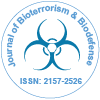Наша группа организует более 3000 глобальных конференций Ежегодные мероприятия в США, Европе и США. Азия при поддержке еще 1000 научных обществ и публикует более 700 Открытого доступа Журналы, в которых представлены более 50 000 выдающихся деятелей, авторитетных учёных, входящих в редколлегии.
Журналы открытого доступа набирают больше читателей и цитируемости
700 журналов и 15 000 000 читателей Каждый журнал получает более 25 000 читателей
Индексировано в
- Индекс источника CAS (CASSI)
- Индекс Коперника
- Google Scholar
- Шерпа Ромео
- Открыть J-ворота
- Генамика ЖурналSeek
- Академические ключи
- ЖурналТОС
- ИсследованияБиблия
- Национальная инфраструктура знаний Китая (CNKI)
- Справочник периодических изданий Ульриха
- РефСик
- Университет Хамдарда
- ЭБСКО, Аризона
- OCLC- WorldCat
- Онлайн-каталог SWB
- Публикации
- Женевский фонд медицинского образования и исследований
- Евро Паб
- ICMJE
Полезные ссылки
Журналы открытого доступа
Поделиться этой страницей
Абстрактный
Utilizing DNA Synthesis to Develop Fast Reactions to Pandemic and Emerging Pathogens
Shalini D
Emerging diseases and pandemic outbreaks pose an increasing threat to the global community's health and economic stability given how interconnected our globe is today. The current 2009 Influenza A pandemic, the SARS outbreak, and the persistent threat of international bioterrorism are proof of this. Fortunately, the biomedical community has been able to quickly produce sequence data, allowing for the quick identification of these pathogens. However,despite having sequencing data, it has taken a while for this information to be used to generate actionable treatments or useful experimental results. Thus, it is possible to quickly identify a pathogenic danger that has emerged or progressed into a pandemic; but, doing so in a way that turns this identification into a focused therapy or treatment that is quickly available has proven challenging. Public health depends on being ready for bioterrorist strikes and early detection of specific agents. Emergency rooms might have a significant impact in this area. The broad definition of bioterrorism includes not just catastrophic terrorism that results in high numbers of casualties, but also microevents that use lowtech yet nonetheless cause public unrest, disruption, disease, impairments, and death. It tries to undermine social and political order in addition to causing mortality and morbidity. The most effective protection against potential bioterrorist attacks seems to be preparation. In this essay, we want to raise awareness of biological agents and emphasise how crucial emergency rooms are to solving this public health issue.
Журналы по темам
- Биохимия
- Ветеринары
- Генетика и молекулярная биология
- Геология и науки о Земле
- Еда и питание
- Иммунология и микробиология
- Инженерное дело
- Клинические науки
- Материаловедение
- медицинские науки
- Науки об окружающей среде
- Общая наука
- Сельское хозяйство и аквакультура
- Социальные и политические науки
- Уход и здравоохранение
- Фармацевтические науки
- Физика
- Химия

 English
English  Spanish
Spanish  Chinese
Chinese  German
German  French
French  Japanese
Japanese  Portuguese
Portuguese  Hindi
Hindi